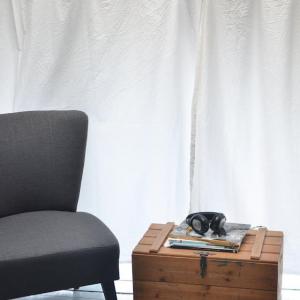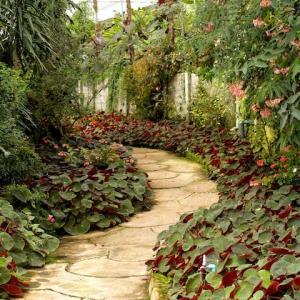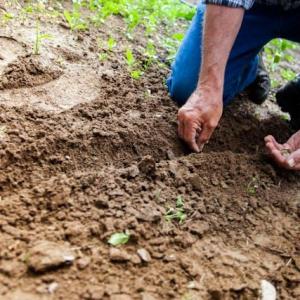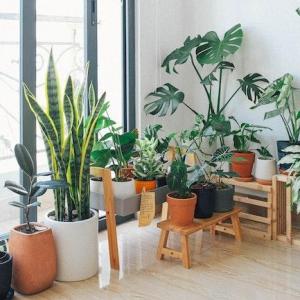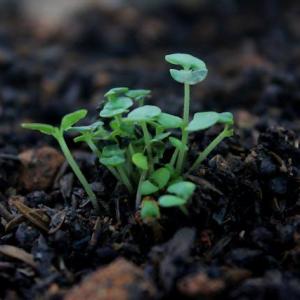Plant Experience
Detail
Crassula perforata is a small shrubby and sprawling succulent up to 18 inches (45 cm) tall. The stem is erect, fleshy, later prostrate and woody. Short, broad ovate, opposite, gray-green leaves edged in pink color with small whitish or pink dots on the margin, up to 0.8 inch (2 cm) long and up to 0.5 inch (13 mm) wide. The flowers are very small, star-shaped and white in color.
Crassula are easy to grow, but they are susceptible to mealy bugs and fungal diseases. As with all succulents, overwatering is sure to be fatal, so err on the side of too dry rather than too wet. Never let your Crassula sit in water. If you water from beneath by letting the plant sit in a saucer of water, make sure to pour off any excess water after a few minutes.
Crassula are generally started by division, offsets or leaf cuttings. Plants can be easily propagated from a single leaf: sprout leaves by placing them into a succulent or cacti mix, then covering the dish until they sprout.
Repot as needed, preferably during the warm season. To repot a succulent, make sure the soil is dry before repotting, then gently remove the pot. Knock away the old soil from the roots, making sure to remove any rotted or dead roots in the process. Treat any cuts with a fungicide. Place the plant in its new pot and backfill with potting soil, spreading the roots out as you repot.
Growing Conditions
Light: Full sun to partial shade. Most needs some shade in the hottest part of summer, but require bright light to attain their most vibrant color.
Water: As succulents, they don’t need frequent watering, since they store it in their leaves. If they are left to sit in wet soil, their roots will rot. During cooler months, give them a good drenching and then allow the soil to dry out, before watering again. They go dormant when the temperature gets hot in summer and need even less water.
Temperature: Prefers average summer temps (65ºF/18ºC – 70ºF/21ºC). In winter, cool to 50ºF/10ºC.
Soil: A well-drained succulent mix, with an ideal pH around 6.0 (slightly acidic).
Fertilizer: Many people underfeed their succulents during the growing season. Feed with a controlled-release fertilizer in the beginning of the season or weekly with a weak liquid solution. Use a balanced 20-20-20 fertilizer at 1/4 strength on mature plants, and a fertilizer with less nitrogen on young plants.
Crassula are easy to grow, but they are susceptible to mealy bugs and fungal diseases. As with all succulents, overwatering is sure to be fatal, so err on the side of too dry rather than too wet. Never let your Crassula sit in water. If you water from beneath by letting the plant sit in a saucer of water, make sure to pour off any excess water after a few minutes.
Crassula are generally started by division, offsets or leaf cuttings. Plants can be easily propagated from a single leaf: sprout leaves by placing them into a succulent or cacti mix, then covering the dish until they sprout.
Repot as needed, preferably during the warm season. To repot a succulent, make sure the soil is dry before repotting, then gently remove the pot. Knock away the old soil from the roots, making sure to remove any rotted or dead roots in the process. Treat any cuts with a fungicide. Place the plant in its new pot and backfill with potting soil, spreading the roots out as you repot.
Growing Conditions
Light: Full sun to partial shade. Most needs some shade in the hottest part of summer, but require bright light to attain their most vibrant color.
Water: As succulents, they don’t need frequent watering, since they store it in their leaves. If they are left to sit in wet soil, their roots will rot. During cooler months, give them a good drenching and then allow the soil to dry out, before watering again. They go dormant when the temperature gets hot in summer and need even less water.
Temperature: Prefers average summer temps (65ºF/18ºC – 70ºF/21ºC). In winter, cool to 50ºF/10ºC.
Soil: A well-drained succulent mix, with an ideal pH around 6.0 (slightly acidic).
Fertilizer: Many people underfeed their succulents during the growing season. Feed with a controlled-release fertilizer in the beginning of the season or weekly with a weak liquid solution. Use a balanced 20-20-20 fertilizer at 1/4 strength on mature plants, and a fertilizer with less nitrogen on young plants.
Album (7)
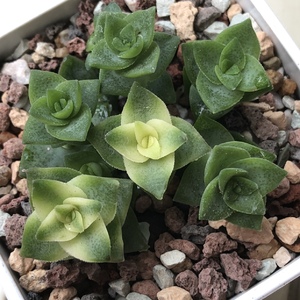
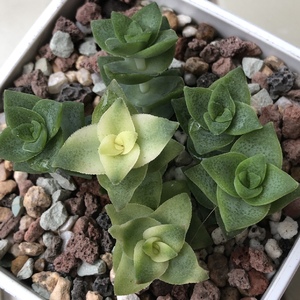
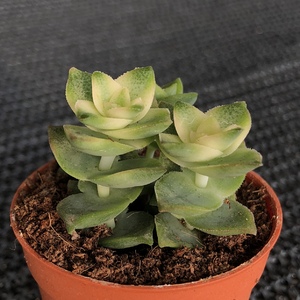

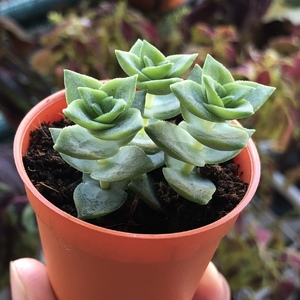
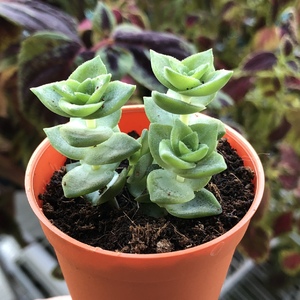

kensong
2018-08-25

And here they are repotted together.




kensong
2018-08-25

Bought two of these variegated variety. AugustFame for only Rm3.30 each.




kensong
2018-08-19

Two pots fr C&O at RM3 each.




kensong
2018-08-19

This is my first growing diary.


Elite Article



